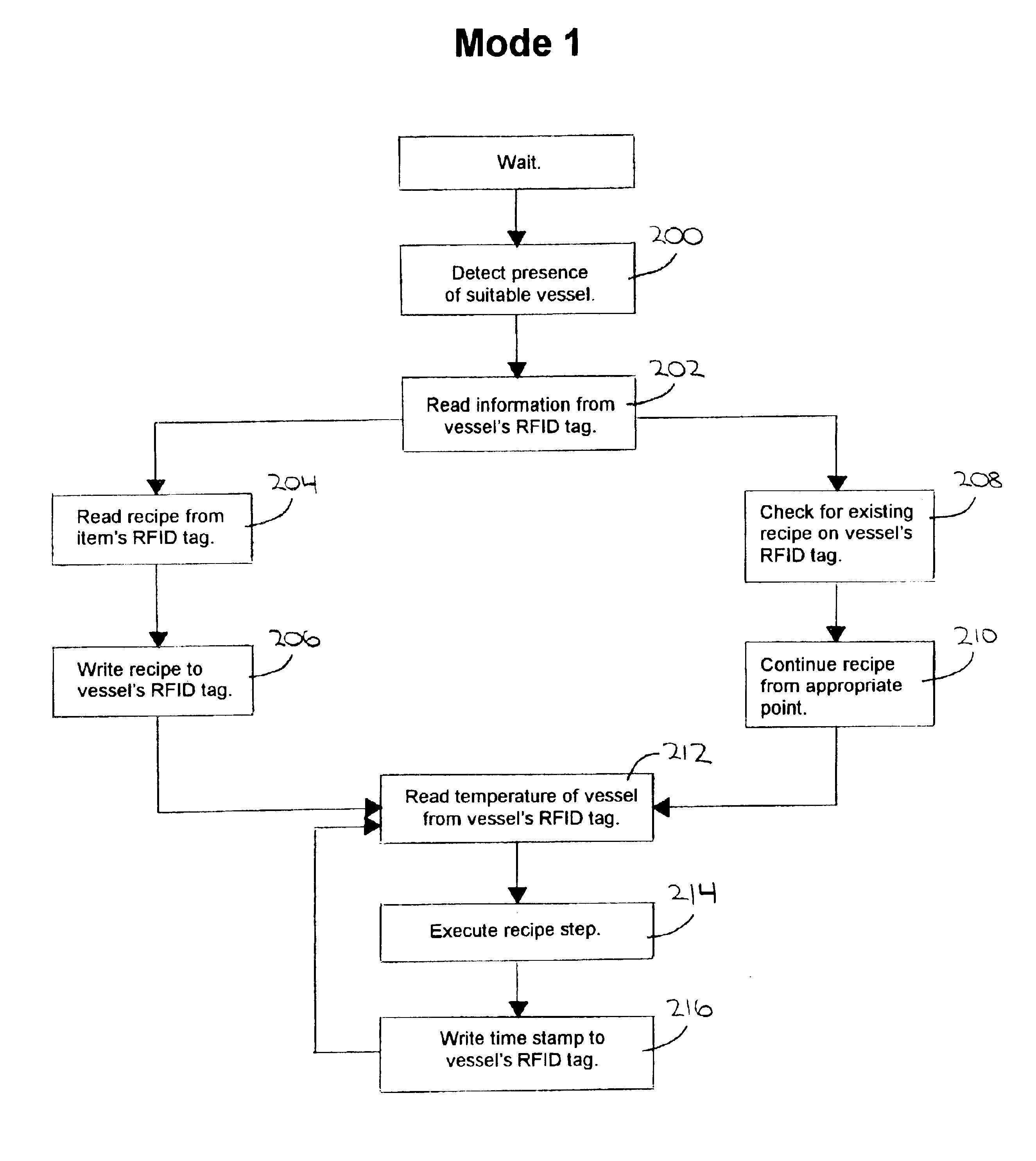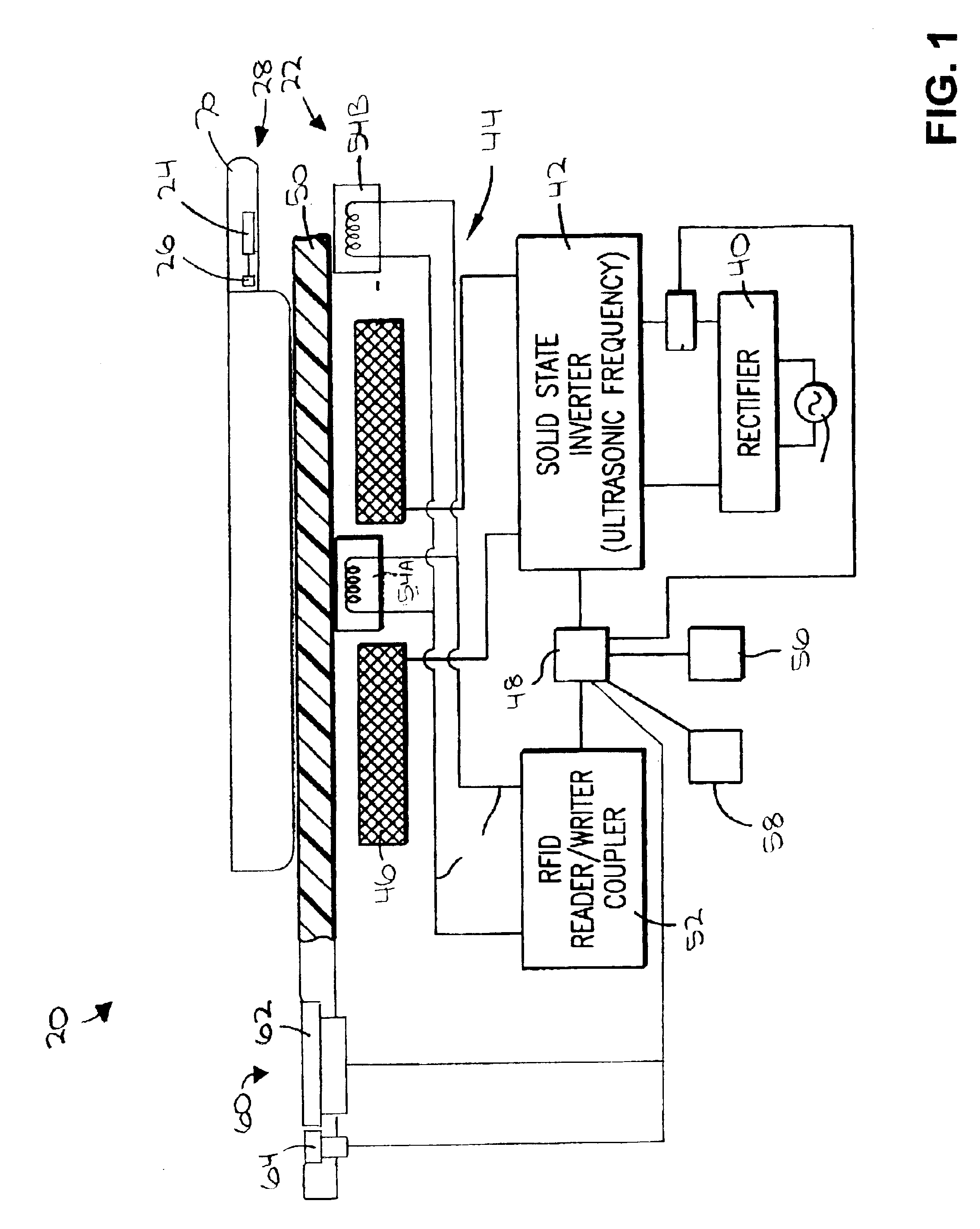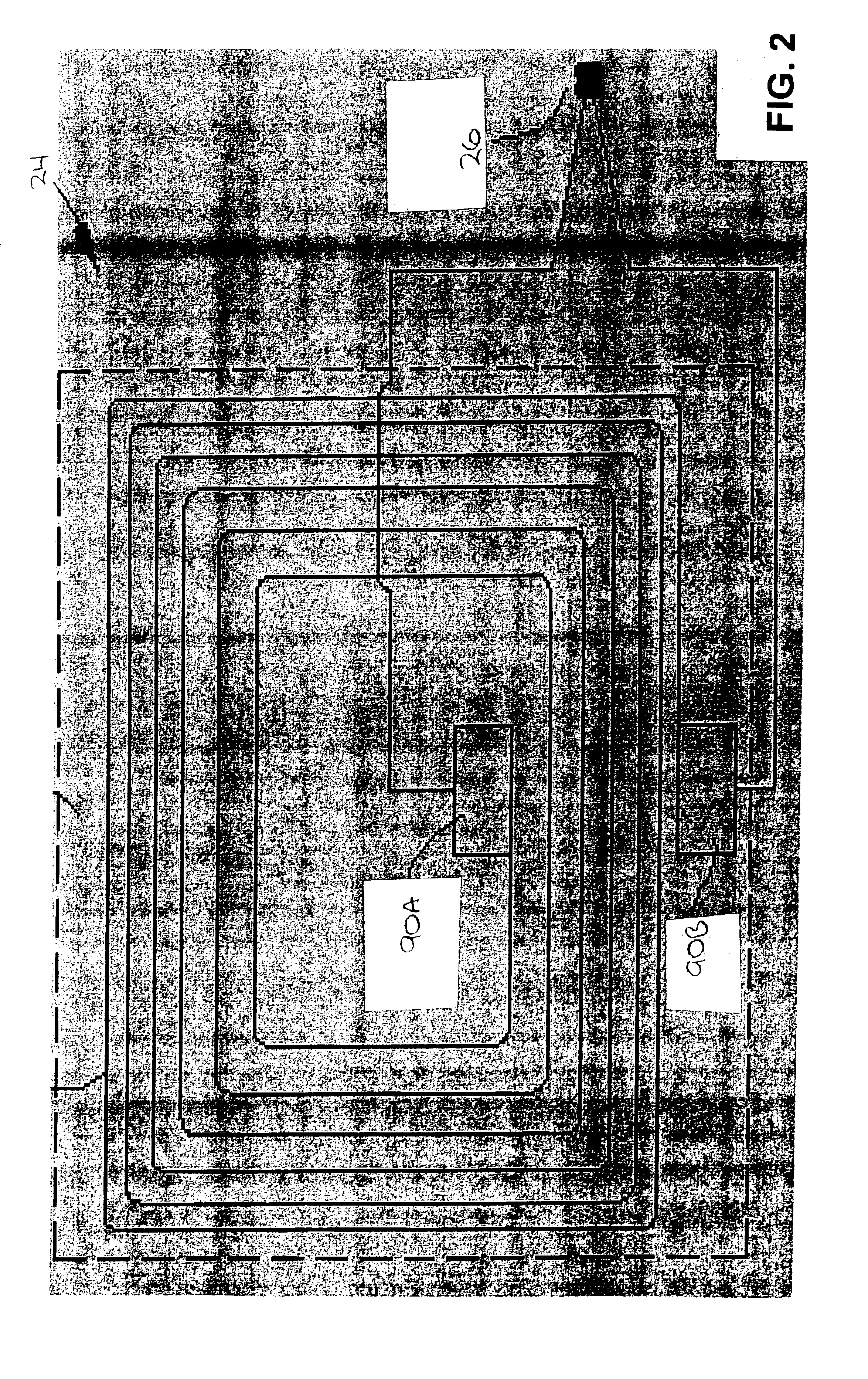RFID-controlled smart range and method of cooking and heating
a smart range and rfid technology, applied in the field of microwave induction ranges, can solve the problems of unknown prior art use of microwave infrared technology, undesirably extreme sensitivity to changes in emissivity, and the inability to use bosch's infrared system, etc., and achieve the effect of fast thermal recovery of the vessel
- Summary
- Abstract
- Description
- Claims
- Application Information
AI Technical Summary
Benefits of technology
Problems solved by technology
Method used
Image
Examples
Embodiment Construction
, below.
DESCRIPTION OF THE DRAWINGS FIGURES
[0029]A preferred embodiment of the present invention is described in detail below with reference to the attached drawing figures, wherein:
[0030]FIG. 1 is a schematic showing major components of a preferred embodiment of the cooking and heating system of the present invention;
[0031]FIG. 2 is a schematic showing components of the RFID tag and temperature sensor used in the system shown in FIG. 1;
[0032]FIG. 3 is a first flowchart of method steps involved in a first mode of operation of the system shown in FIG. 1;
[0033]FIG. 4 is a second flowchart of method steps involved in a second mode of operation of the system shown in FIG. 1;
[0034]FIG. 5 is a third flowchart of method steps involved in a third mode of operation of the system shown in FIG. 1; and
[0035]FIG. 6 is a schematic of an RFID tag memory layout used in the system shown in FIG. 1.
DETAILED DESCRIPTION OF A PREFERRED EMBODIMENT
[0036]Referring to the figures, a system 20 and method for...
PUM
 Login to View More
Login to View More Abstract
Description
Claims
Application Information
 Login to View More
Login to View More - R&D
- Intellectual Property
- Life Sciences
- Materials
- Tech Scout
- Unparalleled Data Quality
- Higher Quality Content
- 60% Fewer Hallucinations
Browse by: Latest US Patents, China's latest patents, Technical Efficacy Thesaurus, Application Domain, Technology Topic, Popular Technical Reports.
© 2025 PatSnap. All rights reserved.Legal|Privacy policy|Modern Slavery Act Transparency Statement|Sitemap|About US| Contact US: help@patsnap.com



